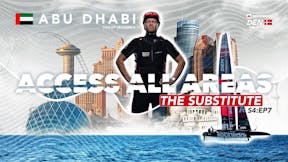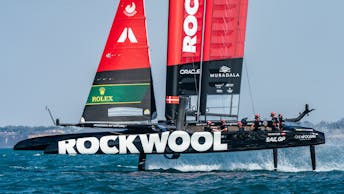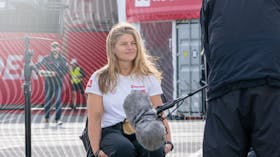Ever wondered how a sailboat would stack up against a balloon in a race downwind? And how a boat is capable of reaching four times the speed of the wind that powers it? Well, SailGP’s F50 catamarans not only answer that question, but they’re rewriting the rules of sailing as they go. Let’s dive into the cutting-edge tech that makes these boats fly – yes, fly – on the water.
The great balloon race
So, back to that balloon equation. It’s an age-old sailing conundrum, often debated in yacht clubs around the world. The concept is quite simple: but where a balloon could float directly from point A to B, making a sailboat travel fast is all about angles.
Actually, the idea of sailing faster than the wind isn’t new – it’s actually a feat that sailboats have always been able to achieve, if sailed at the right angle to the breeze. This is called ‘tacking’ and ‘gybing’, and it’s why you see the SailGP boats zig-zagging each other on the course so often.
Back to our pop quiz: surely this extra ground covered by the boat, finding angles of attack to the wind, would put the boat at a disadvantage to the balloon, right? Well, in the case of a normal sailboat, yes – but when we’re talking about a state-of-the-art SailGP F50, the boat would still have the edge.
ROCKWOOL Denmark SailGP Team zig-zagging in Cadiz which allows them to follow the right angle to the breeze and sail faster than the wind speed.
Breaking sailing’s sound barrier
SailGP is known as F1 on water, and you can see why – with super-charged, foiling boats slicing through the waves at speeds that seem to defy logic. The secret? A mix of smart tech, wind-whispering skill and good old teamwork.

Beneath The Surface
Join us at Masdar City and discover if a truly sustainable city can survive and prosper in the desert. We also popped into Champions for Change, SailGP’s global thought leadership network, to learn how the league's partners are approaching water scarcity and agriculture in the middle east.

Access All Areas
Light winds were forecast for the inaugural Mubadala Abu Dhabi Sail Grand Prix, and with Driver Nicolai Sehested expecting his 2nd child, the team welcomed the 'wind whisperer' himself, Nathan Outteridge.










